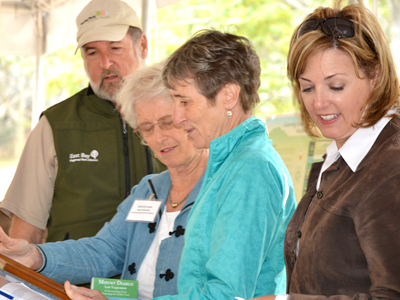
Partnership benefits threatened species and economic growth
Secretary of the Interior Sally Jewell recently visited the East Bay to host a discussion with East Contra Costa County community leaders about a model of collaboration known as habitat conservation plans (HCP). HCPs are agreements through which local land use agencies, landowners and other partners work with the U.S. Fish and Wildlife Service to address long-term conservation needs, maintain local control over land use and provide flexibility to meet economic growth initiatives.
“This community has shown through this collaborative approach that we don’t need to choose between protection of our wildlife and a strong economy – we can have both,” Jewell said.
At the meeting, hosted at the East Bay Regional Park District’s Black Diamond Mines Regional Preserve near Antioch, Jewell noted that more than $59 million has been invested in conservation efforts under the plan, including acquisition of more than 11,000 acres. Meanwhile, economic development continues with 56 projects receiving streamlined permitting through the plan, including the BART Station in Antioch, and an interchange and lanes on Highway 4.
“By coordinating planning and funding sources through the HCP, we have an opportunity to do this conservation both for the benefit of threatened species and for the enjoyment of future generations,” said Robert E. Doyle, General Manager of the East Bay Regional Park District.
The East Contra Costa County HCP is one of 14 regional HCPs in California - together, they are expected to eventually conserve more than 2 million acres of land and provide permitting for thousands of projects with a combined economic value of $1.6 trillion.

